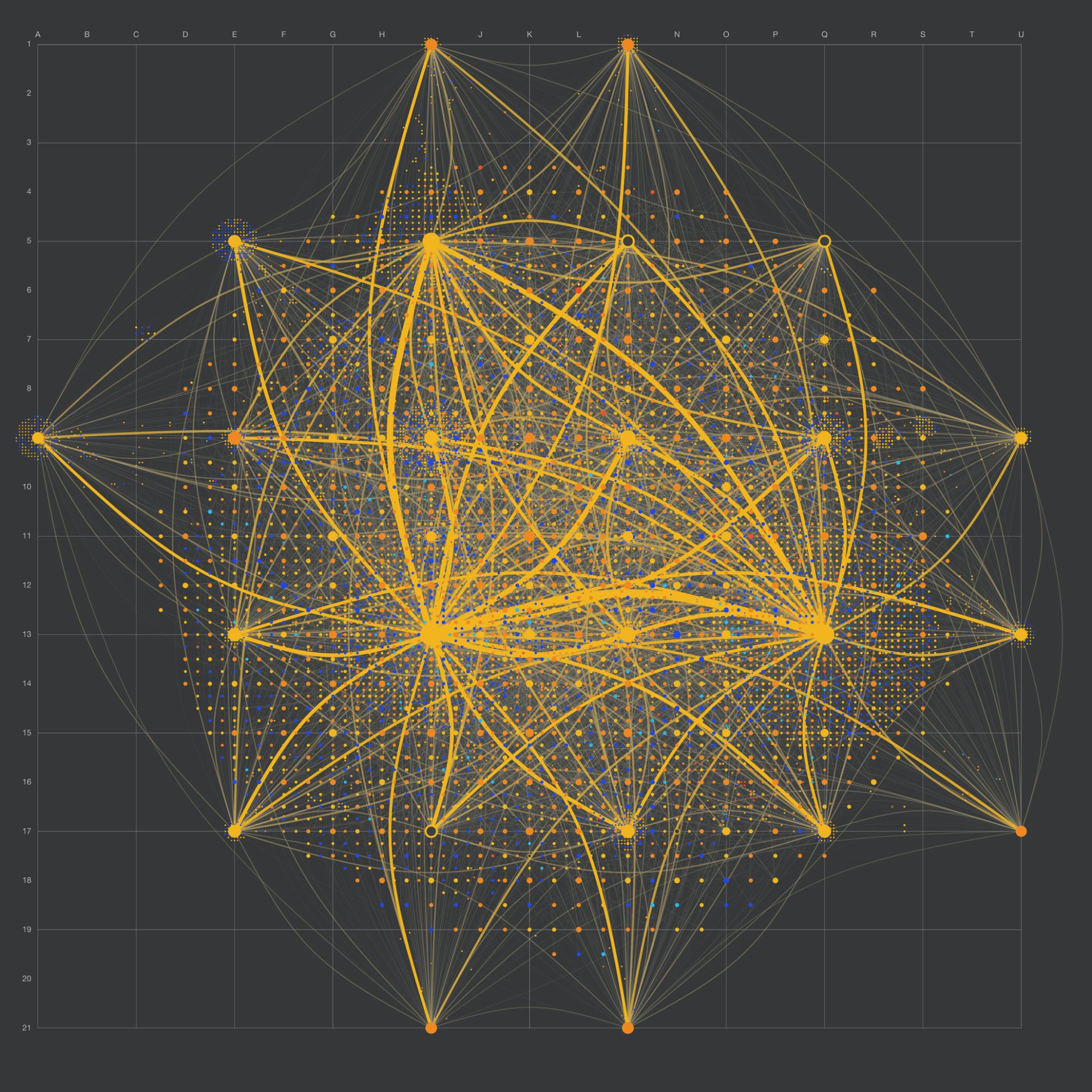The structure of how things relate
Creating mathematical tools for characterizing the structure of ideal graphs and irregular networks, and the behaviour of processes on them.
Networks represent interactions between multiple elements. Widely accessible and large data sets makes it easy to build networks, but extracting meaning from them remains a challenge. Part of the problem is that mathematical methods for characterizing networks are primitive and sundry. While the theory of graphs—idealized networks containing internal symmetry—is more advanced, the mathematical foundations for both networks and graphs, and their relation, are underdeveloped.
In this project we investigate new mathematical methods to describe the topology and geometry of networks and graphs, without regard to the kinds of data from which they are derived. The broad range of techniques under development include applications and extensions of spectral graph theory, tailored graph ensembles, replica methods, community detection and enumerative combinatorics.
A deeper understanding of network and graph structure underpins many other research endeavours. Examples range from biomedical data for personalized medicine to predicting behaviour from social interaction networks to the stability of interconnected financial institutions.
















Papers in this project
Physics of networks
Statistical physics harnesses links between maximum entropy and information theory to capture null model and real-world network features.
From ecology to finance
Bipartite networks model the structures of ecological and economic real-world systems, enabling hypothesis testing and crisis forecasting.
Scales in weighted networks
Information theory fixes weighted networks’ degeneracy issues with a generalisation of binary graphs and an optimal scale of link intensities.
Weighted network evolution
A statistical procedure identifies dominant edges within weighted networks to determine whether a network has reached its steady state.
Clustering inverted
Edge multiplicity—the number of triangles attached to edges—is a powerful analytic tool to understand and generalize network properties.